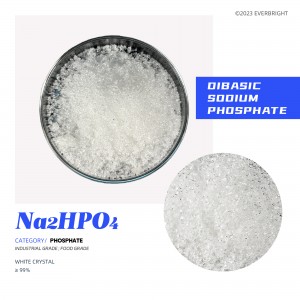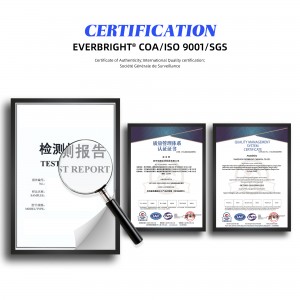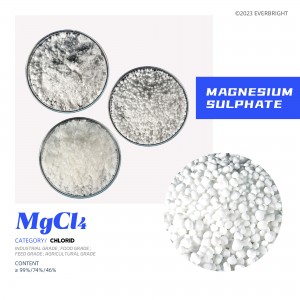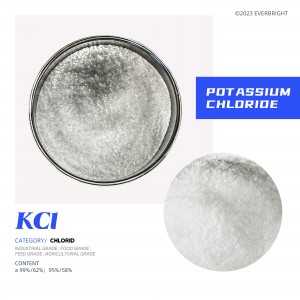Dibasic Sodium Phosphate
Product Details

Specifications provided
White particles content ≥ 99%
(Scope of application reference ‘product usage’)
Disodium hydrogen phosphate easily loses five molecules of crystal water to form heptahydrate (Na2HPO4.7H2O). The aqueous solution is slightly alkaline (the PH of 0.1-1N solution is about 9.0). At 100 ° C, the crystal water is lost and becomes anhydrous, and at 250 ° C, it is decomposed into sodium pyrophosphate. The pH value of 1% aqueous solution is 8.8~9.2; Insoluble in alcohol. Melt at 35.1℃ and lose 5 crystal water.
EVERBRIGHT® ‘ll also provide customized :content/whiteness/particlesize/PHvalue/color/packagingstyle/ packaging specifications and other specific products that are more suitable for your use conditions , and provide free samples.
Product Parameter
7558-79-4
231-448-7
141.96
Phosphates
1.4 g/cm³
soluble in water
158ºC
243 - 245 ℃
Product Usage



Detergent/Printing
Can make citric acid, water softening agent, some textile weight, fire retardant agent. And some phosphates can be used as water quality treatment agent, dyeing detergent, dyeing aid, neutralizer, antibiotic culture agent, biochemical treatment agent and food amendment agent in fermentation buffer and baking powder raw materials. It is used in glaze, solder, medicine, pigment, food industry and other phosphates as industrial water treatment agent emulsifier, quality improver, nutrient fortification agent, fermentation aid, chelating agent and stabilizer. It is used in the production of detergents, cleaning agents for printing plates and mordant for dyeing. In the printing and dyeing industry, it is used as a stabilizer for hydrogen peroxide bleaching and a filler for rayon (to enhance the strength and elasticity of the silk). It is a culture agent for monosodium glutamate, erythromycin, penicillin, streptomycin and wastewater production and treatment products.
Food additive(Food grade)
As a quality improver, PH regulator, nutrient enhancer, emulsifying dispersant, fermentation aid, adhesive and so on. It is mainly used in pasta, soy products, dairy products, meat products, cheese, beverages, fruits, ice cream and ketchup, and is usually 3-5% in food processing.


















